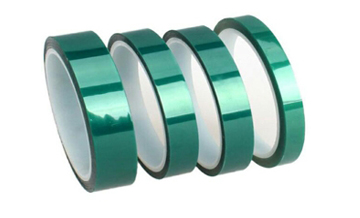In the protective film of an adhesive tape, a film coated with an adhesive is called a "substrate" or "backing".
The substrate plays an important role in achieving the required function in the tape and enhancing its strength. Therefore, there are many different types and substrate design techniques that play an important role in the overall development of the tape.
In packaging applications, hand-tear performance is a priority. At this time, the adhesive must be used with a paper substrate. In electrical applications, where insulation and transparency need to be emphasized, polyester film (PET film) should be used. . When high heat resistance is required, such as in welding shielding, polyimide is required. When both wear resistance and smoothness are to be considered, a polytetrafluoroethylene (PTFE) film should be used. When flexibility is required, For the main performance of surface protection film, polyolefin film should be used. The metal foil is conductive and suitable for connecting various objects, and foam is used for sealing mobile phones.
A PET protective film with an undulated surface is a good example of a substrate that is not only strong but also hand-tearable, and is suitable for architectural applications.
A dicing tape for a silicon wafer is an example of a substrate design, in which case the tensile properties of a plastic film are used. After dicing, although the dicing tape used to hold the chip during picking is stretched, it is still within the design's tolerable pressure.
A special kind of polyolefin film is used for automotive spray protection film. It must be able to conform to the contours of the vehicle and be able to withstand direct sunlight.
In recent years, the use of transparent plastic films as protective films for mobile phones and LCD TV displays has become very common.
Why should the protective film emphasize weather resistance?
Among the many properties of the protective film (viscosity, thickness, color, stretchability, light transmittance, etc.), one is called weather resistance. As the name implies, it is resistant to environmental climate, so why should the protective film emphasize this property? Does the weatherability affect the quality of the protective film?
During the use of no bubbles PET protective film, the protected products will also be directly exposed to the sun, which may take up to six months to one year. In this process, the protective film is generally not stained Damage, but performance may change. You even need to be stuffed in a container and travel across the sea for months. The environment encountered by the protective film is actually quite harsh.

High Temperature Resistant Pet Protective Film
High temperature resistant PET protective film has excellent mechanical functions, and it is very suitable for the tensile strength, elastic modulus, elongation and other requirements of its users when used. The protective film is lazy to the appearance of the material being maintained, and has an excellent adhesion function to the material being maintained. During the data transfer and processing, the maintenance film will not rise and fall.
The protective film has good weather resistance and sticky stability. After several days or a long time, the peeling force does not increase significantly, and it is easy to peel off. When it is peeled off, there is no residual glue on the protected surface and no shadow.
After using the protective film for a period of time, its center performs well, but its two ends are tilted. The primary reason for this phenomenon is that the protective mold stretches a lot during the process of maintaining the profile. In the future, In the high temperature environment, there is an unnecessary shrinkage phenomenon.
Copyright © Shenzhen Wonder Advanced Material Co., Ltd. All Rights Reserved. |Sitemap| Technical Support: |
|
